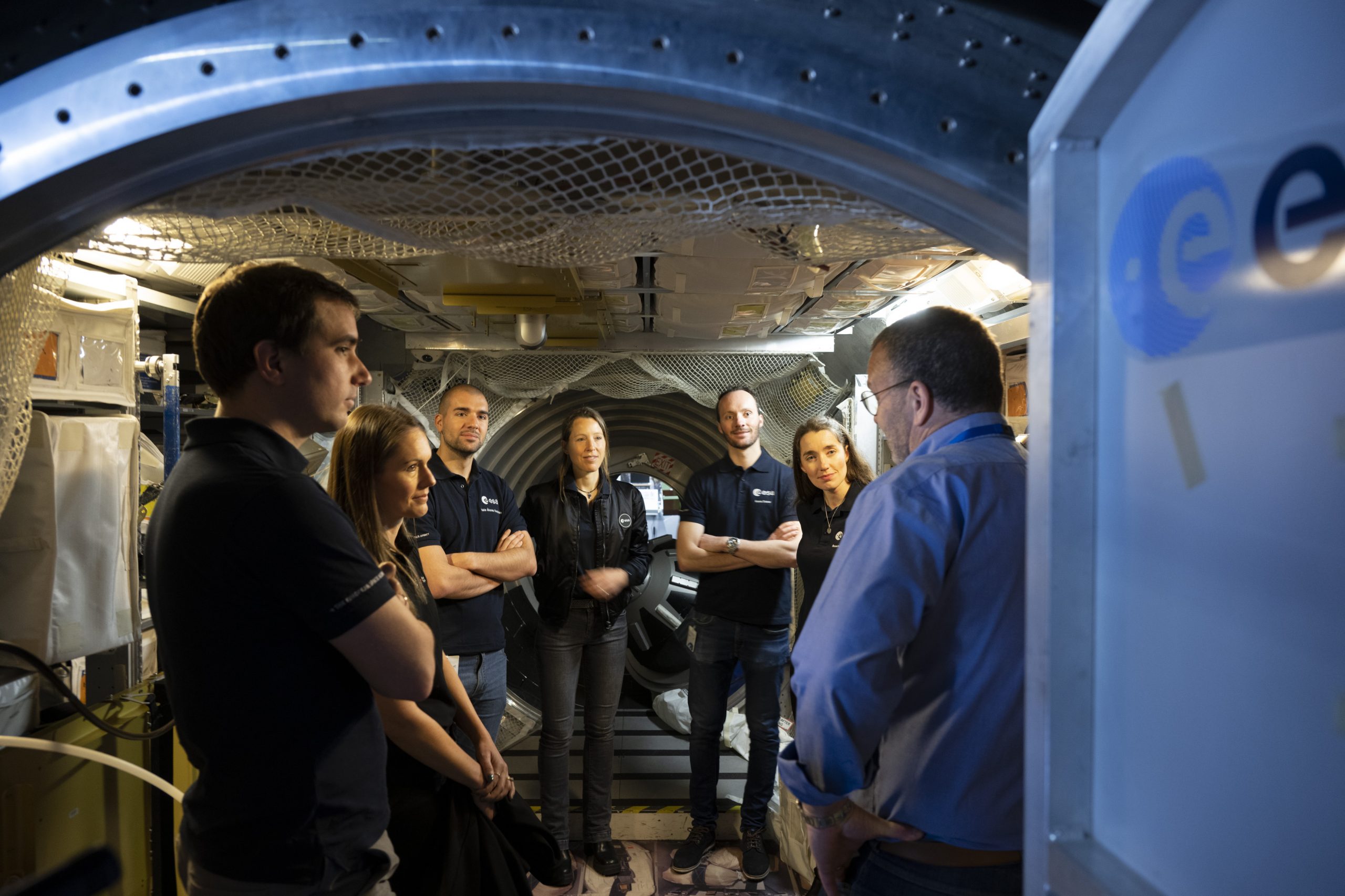The astronaut candidates are currently undergoing a one-year basic astronaut training programme at ESA’s European Astronaut Centre (EAC) in Cologne, Germany, which covers a wide range of skills needed for their future space missions.
During a visit to NASA’s Johnson Space Center (JSC) in Houston, Texas, the candidates got the possibility to get to know their future astronaut colleagues and the training facilities where they will spend a lot of time, once they are assigned a mission and go into mission specific training.
The highlight of their visit? Spacewalk training, a favourite among astronauts. Having already received certification for diving in ESA’s Neutral Buoyancy Facility (NBF), the candidates were ready to scuba dive and observe a full space suit dive in NASA’s 12-meter-deep NBL providing them with a comprehensive understanding of the process and first-hand experience in the simulation.
The NBL hosts a replica of the entire Space Station, where astronauts can perform underwater simulations of spacewalks, or extravehicular activities (EVA), using the Extravehicular Mobility Unit (EMU).
ESA astronaut Luca Parmitano, currently serving as liaison officer between EAC and JSC in Houston, organised and led the visit together with Alexander Gerst, ESA astronaut and lead of astronaut operations at the European astronaut centre. Drawing from their own astronaut training experiences, they crafted a programme aimed at giving these candidates a taste of what lies ahead.
An experienced six-time spacewalker himself, Luca enjoyed sharing his first-hand experiences and anecdotes, guiding the candidates through the underwater replica of the Station, the paths to follow during an EVA and the various workstations.
For ESA’s astronaut candidates, the dive in the NBL pool was an eye-opener. “I was very impressed to see all the modules of the Space Station replica underwater and the paths to follow during a spacewalk. Conducting an EVA training underwater requires a huge team of highly skilled personnel. I really enjoyed this dive: it helped me visualise what spacewalk training will consist of and I am really looking forward to come back to the NBL for the full EVA training flow”, said Sophie.



